When we first inquired about serving as election observers, we were unsure whether we would be accepted because we do not speak Spanish. We were told this would not be a problem. Certainly being a native speaker might have enhanced the experience; however, the way we non-Spanish speakers were paired with Spanish speakers for the day was very effective. Besides, much of the observation process itself is a visual experience not requiring language.
Another important aspect of the observer’s role was to serve as both a visual and physical presence to the Salvadoran people. We were there to support their well-organized process to make certain it was as transparent as possible. And to the possible few who might have chosen to take advantage of the system, we served as a deterrent to their ill intentions.
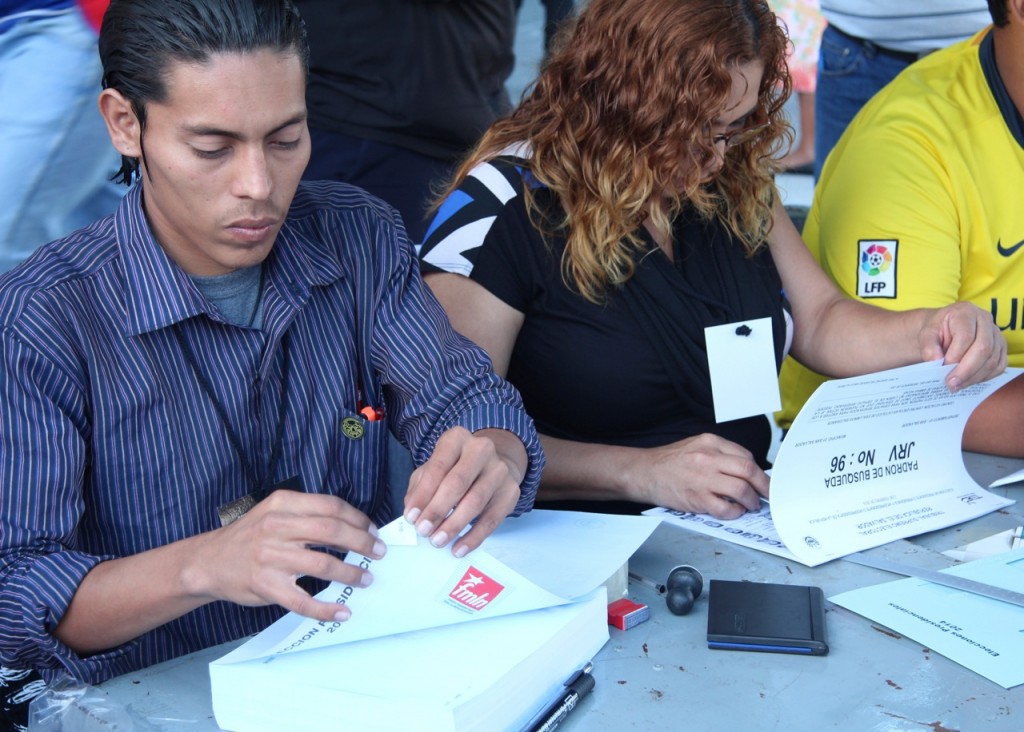
Poll worker tears corner off ballot
The poll workers are at their tables waiting. They are permitted to vote at 6:30, a half hour before the polls officially open at 7 A.M. There is much to do when the long cardboard boxes arrive late.
When those boxes arrive at last, all eyes inspect their contents to make certain the required items are inside, including the 500 ballots, indelible ink, ball-point pens, small ruler, electoral registry, stamps and ink pad, black marker, voter inspection form, registration forms for citizens unable to vote, bag to collect ballot tabs, and tape. The official closing materials include white, pink, green, yellow, and blue copies of forms that need to be filled out for tabulation.
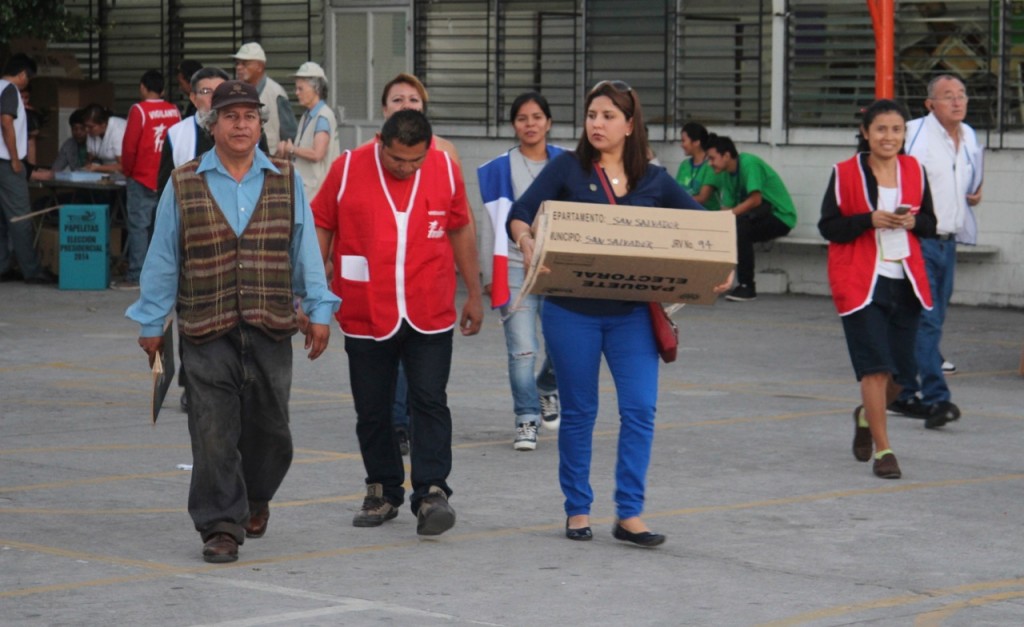
Official ballot boxes arrive
The assigned secretary at the table must count each of the 500 ballots to make sure all are there. Another person takes the list with the DUI (documento unico de identidad) information – photos, names, and numbers– and tapes them onto the large cardboard placards beside his respective numbered table. The large cardboard voting booth is already assembled and in place at each location. A smaller cardboard box for voters to place their cast ballots into goes on top of the table. The secretary tapes the plastic bag used to collect the corner of each ballot onto the edge of the table beside him. (These will be compared in the final count later.)
Meanwhile, right inside the gate itself are large posterboard lists of the same DUI information of every eligible voter for this residential polling place. Given there are 8600 names, this print is small. The purpose is to indicate to which table each person is to report for casting the ballot. Staff are assigned to hand out small white slips of paper with that number to help them locate their table easily.
A team of three poll workers sits at each table. The eligible voter presents his DUI card (ID) which the “president,” sitting in the center, checks for verification on the list and also checks the voter’s hands for ink to make certain he has not already voted elsewhere today.
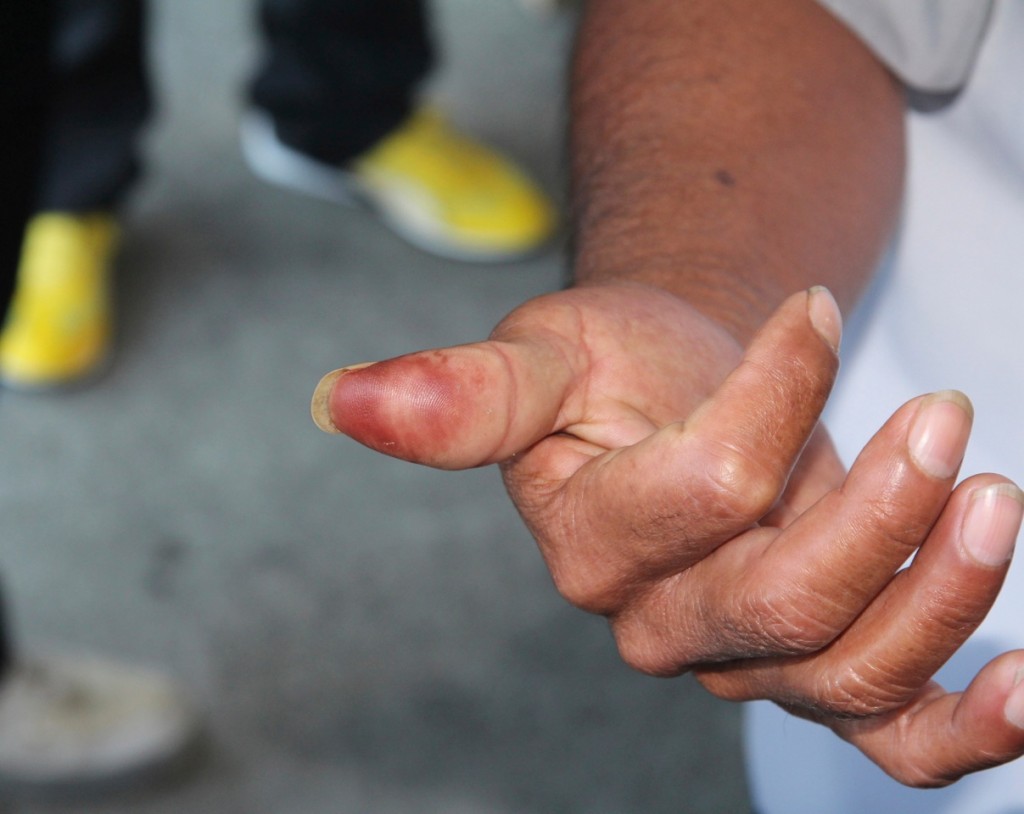
An Inked thumb indicating she has voted
The voter signs the official voter registry within the.template provided and turns over his DUI. The “secretary,” to the left at the table, then signs and stamps the large ballot, tears off the perforated corner and deposits that corner into the plastic bag taped beside him, he hands the ballot to the voter who takes it and a large marker to the voting booth. The booth has a lower section and curtain for wheelchair-bound voters.
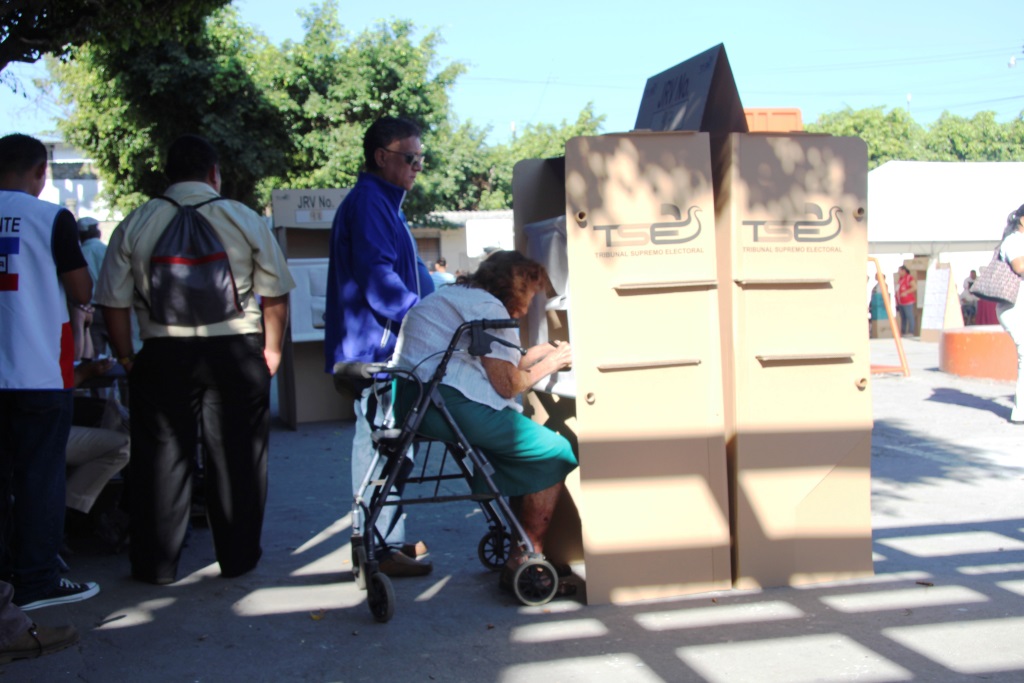
Voter booths accommodate physically challenged voters
When the voter finishes casting his vote, he folds the ballot in quarters and places it into the ballot box on the table, signs the voter registration form a second time, has his thumb inked to show he has voted; only then is his DUI card returned to him.
Note: DUI cards are issued at age 18 and then renewed every five years. The recipient is responsible for updating them whenever necessary, such as address changes, or if they become worn or illegible. A damaged DUI is not honored at the polling place.
Election staff stand at each table to assist voters and help the process go smoothly. They often assist confused and handicapped persons. They remain pleasant and helpful despite standing the entire day on this brutal concrete surface in the sun. Official voting runs from 7 A.M. to 5 P.M. Staff reports at 4:30 A.M., and final ballot counting can go as late as 10 P.M.
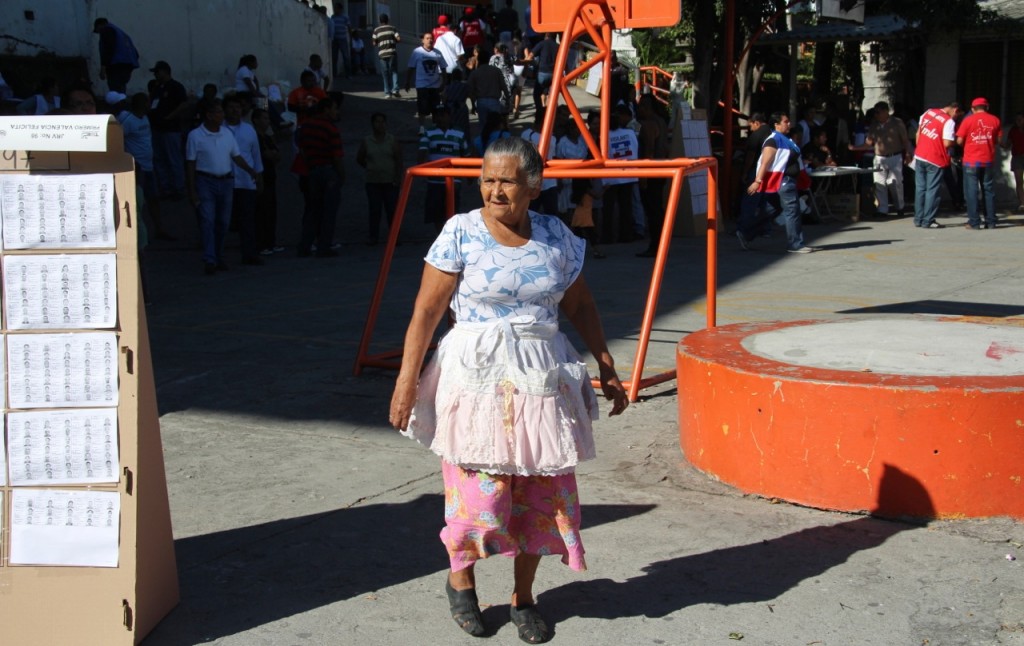
A neighborhood woman comes to exercise her right to vote
Supporting teams from each major party bring in three boxed meals for their respective poll workers throughout the day. Drinks, including the morning coffee, come in the typical plastic bags.
Serving as an election monitor for the Salvadoran Presidential elections is a positive and rewarding experience. It is interesting to watch how another country conducts its political process. Our group ranged from high school students through the elderly, all eager to learn and take part in this unique opportunity. Like any group event of this nature, networking among the other participants from all over the country is a valuable experience. College political science majors would particularly benefit from participating in this type of week-long learning event.


